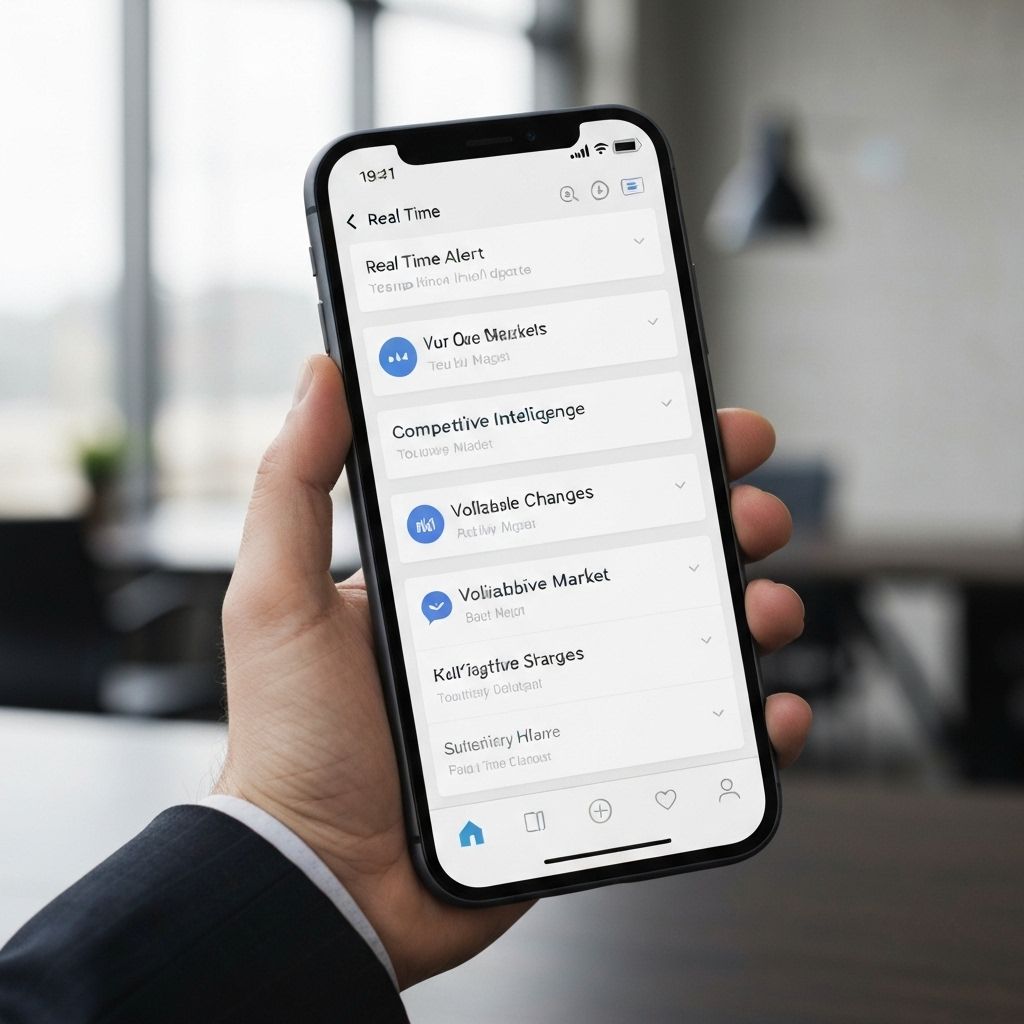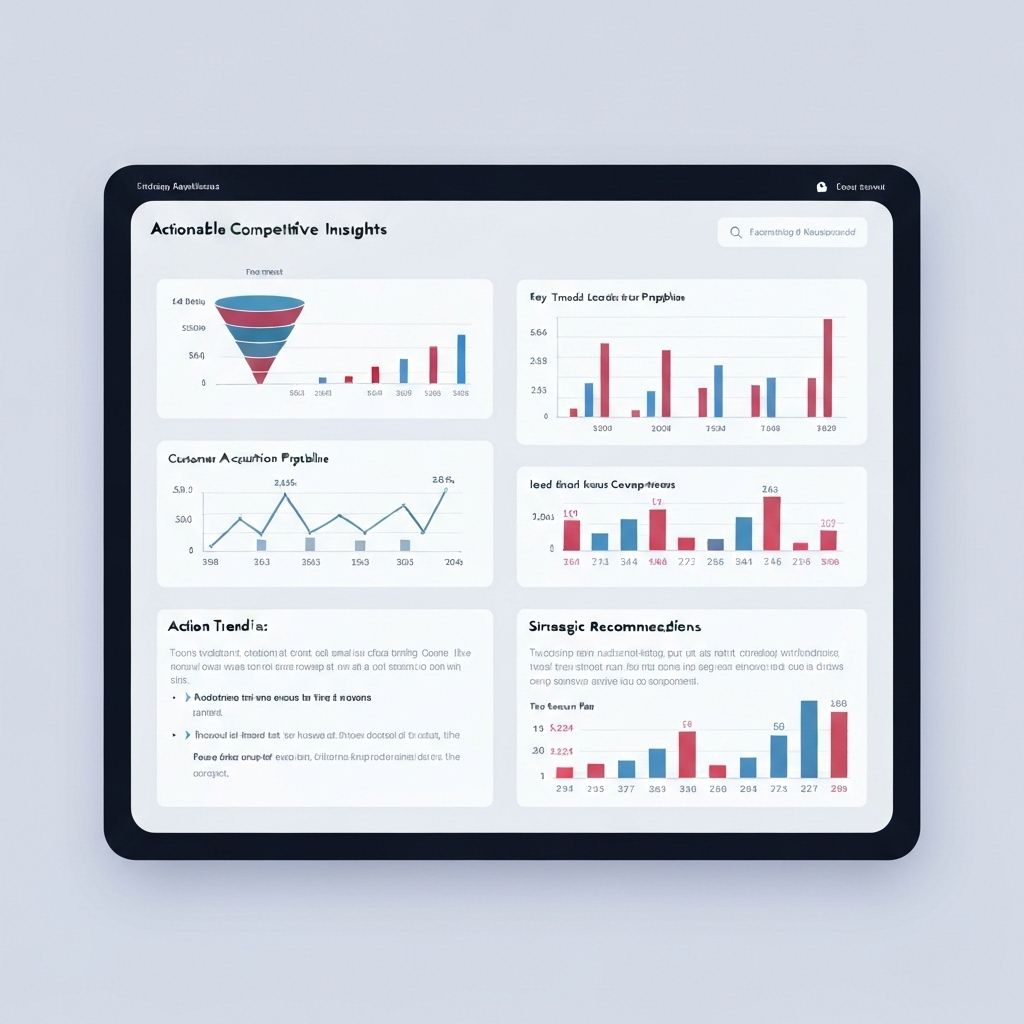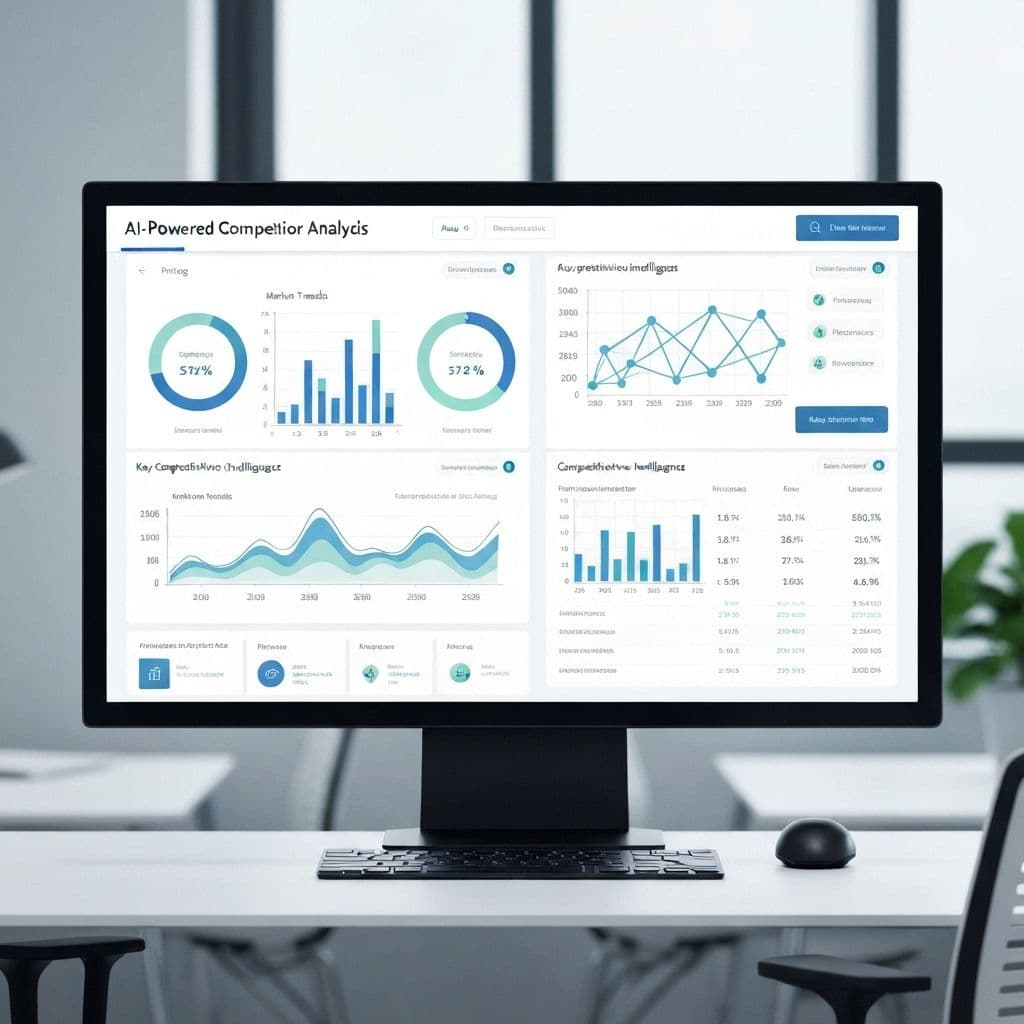The Power of Real-Time Alerts: Never Miss a Competitive Move Again

Imagine discovering that your main competitor launched a major promotion—three weeks after it started. By the time you found out, they'd already captured significant market share, and your response feels reactive and desperate rather than strategic. This scenario plays out constantly for businesses relying on periodic market checks instead of real-time monitoring.
The Cost of Delayed Information

In today's fast-paced business environment, timing is everything. A competitor's pricing change, a new market entrant, a shift in customer sentiment—these developments can significantly impact your business. But their impact depends largely on how quickly you become aware of them and respond.
Consider these common scenarios:
- Pricing changes: A competitor drops their prices by 15%. If you find out immediately, you can make an informed decision about whether to match, differentiate, or target a different segment. If you find out three weeks later, you've already lost customers who made purchasing decisions based on that price difference.
- New competitors: A new business enters your market with aggressive positioning. Early awareness allows you to proactively address their value proposition and protect your customer base. Late awareness means you're scrambling to understand why you're losing customers.
- Reputation issues: Negative reviews or social media sentiment can snowball quickly. Immediate awareness enables damage control. Delayed awareness means the narrative has already formed.
- Market opportunities: A competitor's service failure or product shortage creates an opportunity for you to capture their customers—but only if you know about it while it's happening, not after the fact.
How Real-Time Alerts Work
Modern AI-powered business intelligence platforms continuously monitor your competitive landscape and immediately notify you when significant changes occur. Here's what that looks like in practice:
Automated Monitoring
The system constantly tracks:
- Competitor pricing across all products and services
- New product or service launches
- Changes to competitor websites or offerings
- Customer review sentiment and ratings
- Social media mentions and trends
- Market news and developments
Intelligent Filtering
Not every change deserves immediate attention. Good alert systems use AI to distinguish between:
- Critical alerts: Major pricing changes, new competitors, significant reputation issues
- Important updates: Minor pricing adjustments, new product features, moderate review changes
- Informational notices: Small website updates, routine social media activity
This filtering ensures you're notified about what matters without being overwhelmed by noise.
Actionable Context

The best alert systems don't just tell you what changed—they provide context and recommendations:
- "Competitor A reduced prices 12% on their premium tier. This affects 35% of your customer base. Consider: 1) Matching the price, 2) Emphasizing your superior features, or 3) Targeting a different segment."
- "New competitor B launched today with similar offerings at 20% lower prices. Their initial reviews mention long delivery times. Opportunity: Emphasize your fast, reliable service."
- "Your average review rating dropped from 4.7 to 4.3 stars this week. Primary complaint: customer service response time. Immediate action recommended."
Real-World Impact Stories
The difference between reactive and proactive strategy is often the difference between thriving and merely surviving. Here are real scenarios where real-time alerts made the difference:
The Pricing Response
A boutique retail business received an alert that their main competitor had launched a major weekend flash sale with 25% off their most popular products. Within an hour, they:
- Analyzed which of their products competed directly with the sale items
- Created a targeted promotion emphasizing their superior quality and customer service
- Sent an email to their customer list highlighting their value proposition
- Adjusted their social media messaging for the weekend
Result: Instead of losing customers to the competitor's sale, they maintained their sales volume and actually acquired new customers who appreciated their transparent value communication.
The Reputation Save
A professional services firm received an alert that a negative review had been posted on a major platform. The review mentioned a specific service issue that, if left unaddressed, could damage their reputation. Within 30 minutes, they:
- Contacted the customer directly to understand and resolve the issue
- Posted a professional, empathetic public response
- Implemented a process change to prevent similar issues
- Followed up with the customer, who updated their review to reflect the positive resolution
Result: What could have been a reputation crisis became a demonstration of excellent customer service, actually enhancing their reputation.
The Market Opportunity
A restaurant received an alert that a competitor had suddenly closed for renovations for two weeks. They immediately:
- Increased their advertising budget for those two weeks
- Created a "Welcome [Competitor] Customers" promotion
- Extended their hours to accommodate increased demand
- Ensured they were fully stocked and staffed
Result: They captured a significant portion of the competitor's customer base, many of whom became regular customers even after the competitor reopened.
Setting Up Effective Alerts
To maximize the value of real-time competitive alerts, consider these best practices:
1. Define Your Competitive Set
Identify the 3-7 competitors that matter most to your business. Trying to monitor too many competitors creates noise; monitoring too few leaves blind spots.
2. Prioritize Alert Types
Determine which types of changes are most critical for your business:
- For price-sensitive markets: Pricing changes are critical
- For service businesses: Reputation and review alerts are paramount
- For rapidly evolving markets: New competitor alerts and product launches are key
3. Establish Response Protocols

Real-time alerts are only valuable if you can respond quickly. Establish clear protocols:
- Who receives which types of alerts?
- What's the expected response time for different alert priorities?
- What decision-making authority do team members have?
- What resources can be quickly mobilized for responses?
4. Review and Refine
Regularly assess your alert system:
- Are you getting too many or too few alerts?
- Are the alerts actionable and relevant?
- How quickly are you responding?
- What's the business impact of your responses?
The Competitive Advantage
Real-time competitive alerts transform your business from reactive to proactive. Instead of discovering market changes weeks after they occur, you're aware of them as they happen. Instead of feeling like you're always playing catch-up, you're responding strategically and sometimes even anticipating moves before they fully materialize.
This shift has profound implications:
- Reduced customer loss: Quick responses to competitive moves prevent customer defection
- Captured opportunities: Immediate awareness of competitor weaknesses allows you to capitalize quickly
- Protected reputation: Fast responses to negative feedback prevent reputation damage
- Strategic confidence: Knowing you won't miss important market developments reduces stress and enables better long-term planning
The Bottom Line
In business, timing isn't everything—but it's close. The difference between knowing about a competitive move immediately versus discovering it weeks later can be the difference between maintaining your market position and losing ground you'll struggle to recover.
Real-time competitive alerts aren't a luxury for large enterprises anymore. They're an accessible, essential tool for any business that wants to compete effectively in fast-moving markets. The technology exists, it's affordable, and it's proven to deliver significant competitive advantages.
The question is simple: Do you want to be among the businesses that know what's happening in their market as it happens, or among those that find out too late to respond effectively?
Your competitors are making their choice. What's yours?

